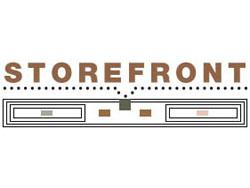Store Front - August/September 2006
By Sonna Calandrino
For the past three years, we’ve talked about retail best practices and things retailers can do to improve their businesses and their profitability. But a few profit-draining worst practices—ten, as a matter of fact—keep coming back over and over again.
These practices are largely a function of complacency—that is, a misplaced sense of well being that results in inaction. They’re insidious little practices that don’t seem like much, but they add up sale after sale. And that’s what costs the most.
If you don’t want to grow and prosper, ignore this “Top Ten Things NOT To Do” list. If you’re interested in growth, you’ll want to share these “Worst Practices” with your salespeople.
1. Not getting deposits (real money) on goods and materials ordered.
How many times have you ordered or special ordered products without getting a deposit, only to find that the customer has changed her mind? Make it a point to get at least half—or paid in full if you can—on every order. You aren’t left holding the bag, and it makes your customer take ownership of the transaction.
A corollary to this is “not getting paid on time.” Translation: carrying receivables. Carrying commercial customers is one thing, but retail customers? Do you want to be liked, but broke? Ask for a healthy deposit and set a time to get the final payment. Don’t leave it up to your installer! And don’t send a bill. Schedule a visit and avoid the receivables blues. Follow up on the money and check for customer satisfaction.
2. Not charging for measures.
Sounds like a good thing, but again, how many of these end up in a “no sale?” Take a tip from the Big Boxes. They’ve figured it out. They build the cost into the sale, charging up front and “deducting” it from the final sale.
3. Not selling credit.
Dealers continue to bemoan the fact that “credit costs.” So what? If credit is “sold” to the consumer as a purchasing tool . . . and if you sell more higher margin goods, and if you build the cost into your pricing, what do you care? Encourage credit sales. Pay spiffs for applications and approvals—and credit sales. Credit will get you more business at higher prices.
4. Not updating your website.
You know how annoying it is to visit a website of a business you’re interested in, only to find out it’s been unchanged since 1998. Is your website in the same boat? Are you still promoting styles that are now out of date and using contact information that’s erroneous—like members of the sales team who left when Clinton was still in office?
5. Not capturing upcharges.
Manufacturers, shippers, even the airlines are passing on surcharges like fuel costs. You don’t like it, and the customer doesn’t like it, but we’re all used to it and we all pay it. So, why are you absorbing those costs? If consumers are willing to pay at the pump, they’ll understand you’re both in the same boat. Explain the surcharges up front or build them into your pricing.
6. Not really knowing your margins.
Beyond the upcharges, there are not-so-hidden costs that impact a dealer’s margin. More than the cost of goods plus profit, take a look at every element in your business. (Refer again to Numbers 3 and 5.) Overhead, salaries, fixed and fluctuating costs all need to be factored into the initial cost. then it’s time to factor in your profit and set your prices. You won’t be left wondering at the end of the year where the profit went.
7. Not marking products based on their value.
It’s an easy way out—marking merchandise based on what you paid for it. Thinking profitably means setting prices based on their perceived value to the customer. Not all products have the same perceived value. It’s the difference between Dunkin’ Donuts and Starbucks. Which are you?
8. Not being consistent with advertising and pricing.
You show square foot pricing in the window and square yards in your advertising, maybe both on your marked merchandise. Homes are built, sold and assessed by the square foot. Be consistent and remember that it’s easier to bump up pricing 12 cents a square foot than $1.08 a yard.
9. Not safeguarding your samples.
Are you lending samples and not getting a name, address and phone number? Perhaps even a deposit? After all, those samples have a value to you and should project a value to the customer who’s thinking of putting those products in her home. If you don’t value them, why should she? Not only don’t they get returned (and you have to pay to get them replaced), but your customer is left with the same careless approach to your relationship. What does an empty space in a merchandising display say? Are you just sloppy or don’t you have a complete line?
10. Not determining your own destiny.
So often, retailers let their salespeople determine the profitability of their business. They do it by giving price lists to the sales staff, and then letting them determine the final retail price. So much for margin and cost containment. Instead, arm your staff with the education and tools they need to sell more and better goods. It takes little skill to drop the price, but a lot to hang in with the customer, working through concerns, options and uncertainties about fashion and value. Explain that cutting prices means they’re taking a hit, too. Everyone should be working at optimum profitability.
Copyright 2006 Floor Focus Inc
